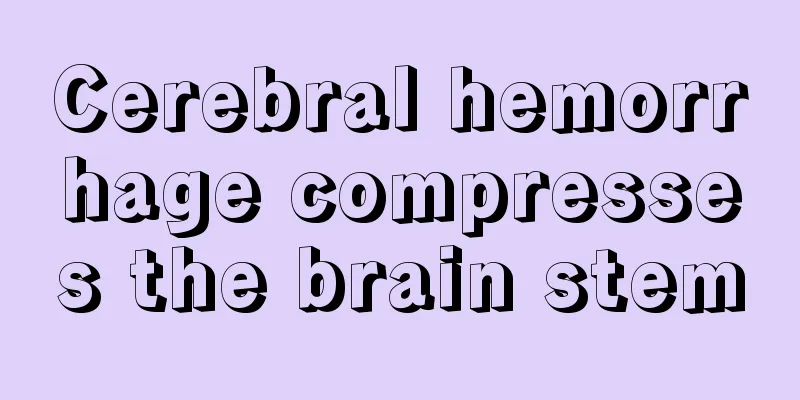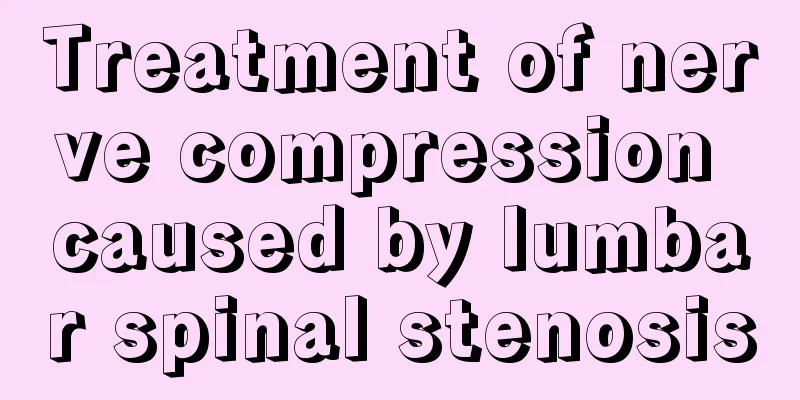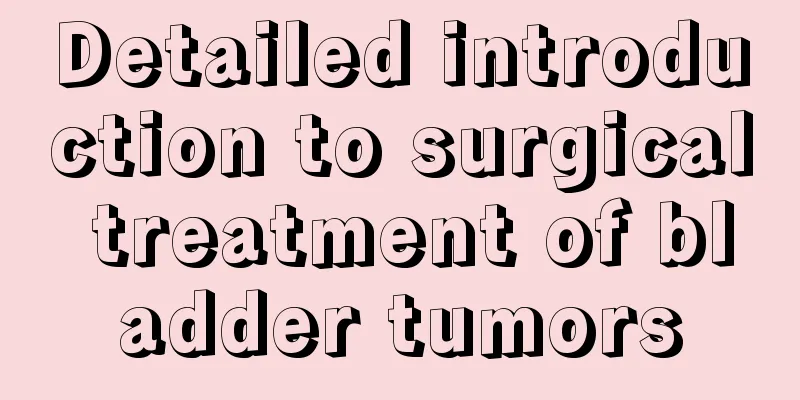Cerebral hemorrhage compresses the brain stem

|
Cerebral hemorrhage is a very serious disease because if it is an acute cerebral hemorrhage, it can easily cause shock in the human body. Or in severe cases, people may die. Cerebral hemorrhage should be closely related to your daily living habits, so you should pay attention to adjusting your physical condition. The problem of cerebral hemorrhage is more complicated. So what should we do if cerebral hemorrhage compresses the brain stem? What to do if cerebellar hemorrhage compresses the brain stem? Most cerebellar hemorrhages are hypertensive cerebral hemorrhages, which have an acute onset. When the amount of bleeding reaches a certain level, it will compress the brainstem in front. When the compression is slight, the pupil on the compressed side will dilate and the light reflex will disappear, indicating that emergency treatment is required; if the compression is further aggravated, respiratory dysfunction will occur, and at the same time, due to compression of the fourth ventricle, acute hydrocephalus will occur, the intracranial pressure will further increase, and the pressure on the brainstem will be aggravated; more severe compression can lead to respiratory arrest, endangering the patient's life. Therefore, when cerebellar hemorrhage compresses the brainstem, urgent treatment measures are required: 1. General measures: closely monitor vital signs, administer oxygen, perform endotracheal intubation when necessary, maintain airway patency, maintain stable blood pressure, perform symptomatic treatment such as hemostasis, dehydration, and fluid replacement, and actively complete relevant preoperative preparations (preoperative electrocardiogram, blood test, blood preparation, shaving, etc.). 2. Surgical treatment: craniotomy and hematoma removal or navigation-guided hematoma cavity drilling and drainage can be selected according to the actual situation. When the condition is urgent and navigation equipment is available, drilling and drainage of the hematoma cavity can be selected. This can relieve the pressure of bleeding on the brainstem as quickly as possible. Drilling and drainage is a minimally invasive surgery that causes less trauma to the patient. However, this surgical method has high requirements for equipment. If there is a lack of equipment for blind puncture, the operating doctor needs to have skilled techniques. In the absence of navigation equipment and the patient's condition is not too urgent, craniotomy and hematoma evacuation can be considered. This surgery can remove the hematoma under intuitive conditions and perform craniectomy to decompress the cranium and increase intracranial space at the same time. If the patient experiences respiratory arrest and there is no time for surgical treatment, emergency ventricular puncture and catheter drainage can be considered to reduce intracranial pressure and buy time for the next operation. |
<<: Is there any cure for brainstem hemorrhage
>>: What to do if brain stem is blocked
Recommend
What should I do if my stomach feels uncomfortable after motion sickness?
With the improvement of living standards, cars ar...
Will fitness make your face thinner?
Nowadays, people, especially women, want to have ...
Does saliva contain DNA?
For an adult, the daily saliva secretion is about...
Effects and methods of apple and pear lean meat soup
Apples have the effect of promoting salivation an...
The occurrence of skin cancer is likely related to viruses
According to research, papillomavirus may be rela...
Can you drink water that has been boiled repeatedly?
Many people like to boil water and then boil it f...
Is esophageal cancer inherited by males or females?
Is esophageal cancer a family disease? Is esophag...
What are the nursing methods for melanoma
In recent years, melanoma has gradually evolved i...
The best hospital for liver cancer surgery
Liver cancer refers to malignant tumors that occu...
What harm does environmental pollution do to the body?
The most direct impact of environmental pollution...
How much does colon cancer surgery cost
Rectal cancer is a common malignant tumor in the ...
What are the diagnosis and treatment methods for irritable bowel syndrome
Many people in today’s society do not pay attenti...
What diseases can be caused by vitamin A deficiency?
Vitamin A deficiency Vitamin A is an important co...
Which sanitary napkin is good?
Sanitary napkins are materials that come into dir...
How much does early tongue cancer removal surgery cost?
How much does it cost for early-stage tongue canc...









